These five ripple noises are difficult to ignore during design
The low frequency ripple is related to the filter capacitor capacity of the output circuit. Due to the limitation of the volume of the switching power supply, the capacity of the electrolytic capacitor cannot be increased indefinitely, resulting in the residual of the output low-frequency ripple, which varies with the manner of the rectifier circuit.
The general switching power supply consists of AC/DC and DC/DC. The basic structure of AC/DC is rectification and filtering circuit. The output DC voltage contains AC low frequency ripple, and its frequency is twice the input AC power frequency. The amplitude is related to the power output power and filter capacitor capacity. Generally, it is controlled at 10 Less than %. The AC ripple is attenuated by the DC/DC converter and appears as low frequency noise at the output of the switching power supply. The magnitude of the AC ripple is determined by the ratio of the DC/DC converter and the gain of the control system.
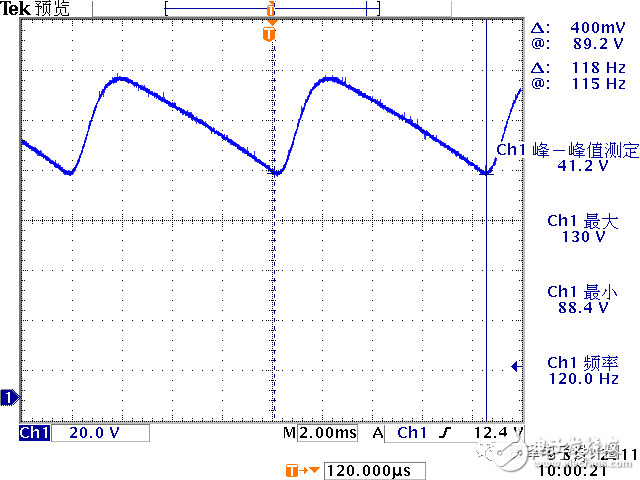
Low frequency ripple
For example, for a normal 24V power supply, the ripple rejection ratio of the voltage-controlled DC/DC converter is generally 45 to 50 dB, and the effective value of the low-frequency AC ripple at the output is 60 to 120 mV. The current-controlled DC/DC converter has a slightly higher ripple rejection ratio, but the low-frequency AC ripple at the output is still large. To achieve a low ripple output of the switching power supply, filtering must be applied to the low frequency power supply ripple. It can be eliminated by using pre-stage pre-regulation and increasing the DC/DC converter closed-loop gain.
Low frequency ripple suppression
a. Increase the inductance and capacitance parameters of the output low-frequency filter to reduce the low-frequency ripple to the required index.
b. Adopt feedforward control method to reduce the low frequency ripple component.
High frequency rippleThe high-frequency ripple noise is derived from the high-frequency power switching circuit. In the circuit, the high-frequency switching of the input DC voltage is performed by the power device, and then the rectifier filter is implemented to achieve the regulated output. The output terminal has the same operating frequency as the switch. The frequency of the high-frequency ripple, its influence on the external circuit is mainly related to the switching frequency of the switching power supply, the structure and parameters of the output filter, and the operating frequency of the power converter is designed to be as high as possible, which can reduce the ripple of the high-frequency switch. Filtering requirements.
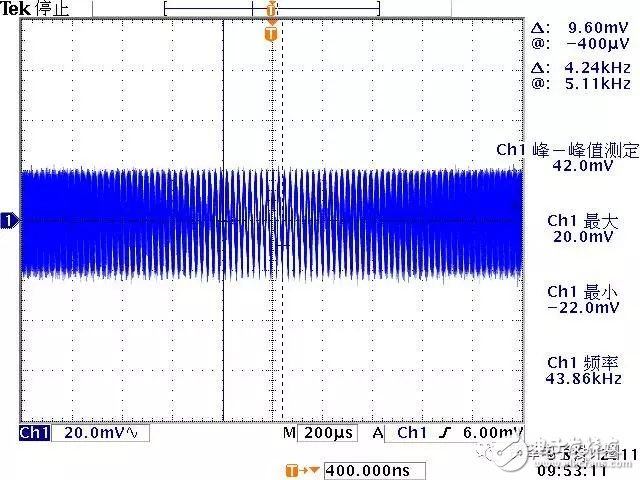
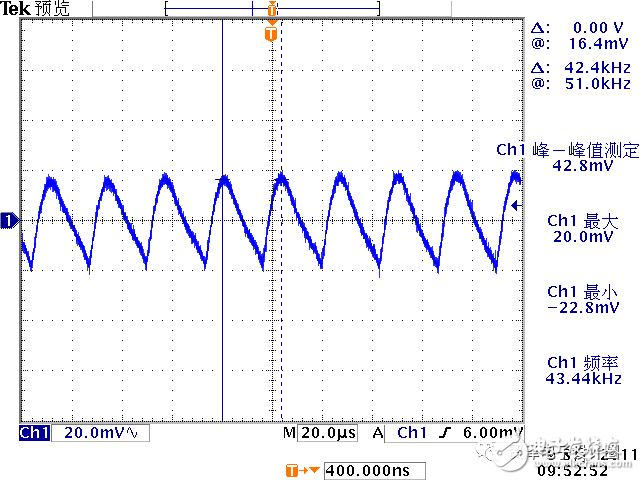
High frequency ripple
High frequency ripple suppression
a. Increase the operating frequency of the switching power supply to increase the high frequency ripple frequency, which is beneficial to suppress the output high frequency ripple.
b. Increase the output high-frequency filter to suppress the output high-frequency ripple.
c. Adopt multi-stage filtering.
Common mode ripple noiseSince there is parasitic capacitance between the power device and the heat sink base plate and the original and secondary sides of the transformer, the wire has parasitic inductance. Therefore, when the rectangular wave voltage acts on the power device, the output terminal of the switching power supply will generate common mode ripple noise. Reduce and control the parasitic capacitance between the power device, the transformer and the chassis ground, and add common mode rejection inductance and capacitance on the output side to reduce the common mode ripple noise of the output.
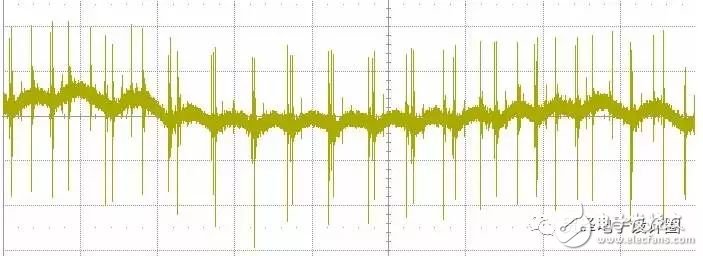
Common mode ripple noise
a. The output uses a specially designed EMI filter
b. Reduce the switch burr amplitude
Ultra high frequency resonant noiseThe ultra-high frequency resonant noise is mainly derived from the diode junction capacitance of the high-frequency rectifier diode in reverse recovery, the resonance of the power device junction capacitance and the line parasitic inductance when the power device is switched, and the frequency is generally 1 to 10 MHz, and the soft recovery characteristic diode and junction are selected. Measures such as small switching tubes and reduced wiring length can reduce UHF resonant noise.
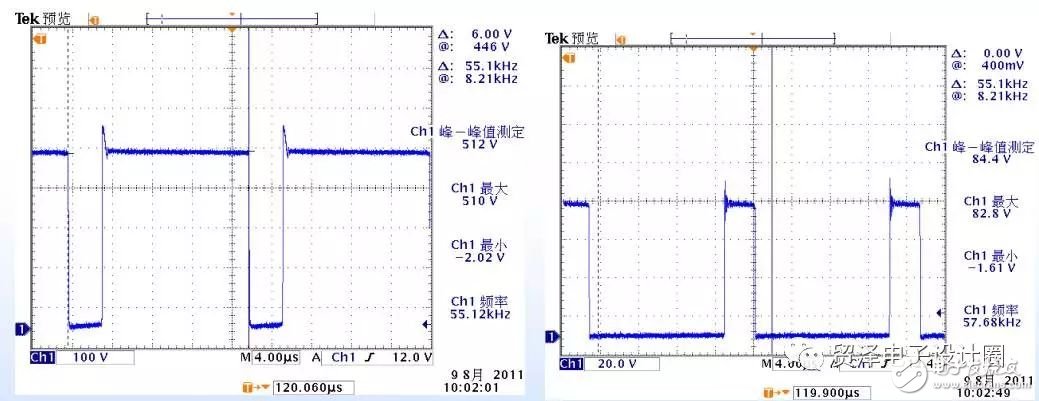
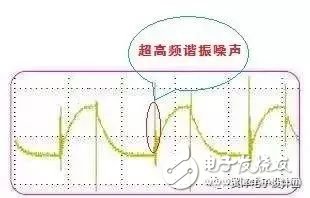
Ultra high frequency resonant noise
Suppression of ultra high frequency resonant noise
Ultra-high frequency resonant noise can be reduced by selecting soft recovery characteristic diodes, small junction capacitance switches, and reducing wiring length.
Ripple noise caused by closed loop regulation controlSwitching power supplies require closed-loop control of the output voltage, and improper design of the regulator parameters can also cause ripple. Entering the regulator loop through the feedback network as the output fluctuates may cause self-oscillation of the regulator, causing additional ripple. This ripple voltage generally has no fixed frequency.
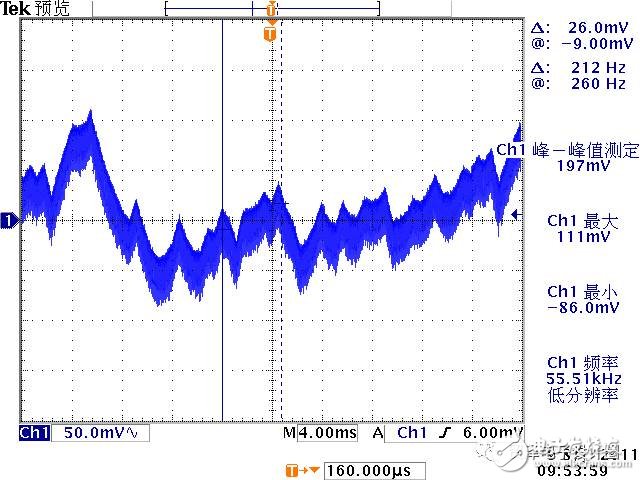
Ripple noise caused by closed loop regulation control
Suppression of ripple noise caused by closed-loop regulation control
In the switching DC power supply, the output ripple is often caused by improper selection of the regulator parameters. This part of the ripple can be suppressed by the following method.
a. The compensation network of the regulator is added to the ground, and the compensation of the regulator can suppress the ripple increase caused by the self-excitation of the regulator.
b. Reasonably select the open-loop amplification factor of the closed-loop regulator and the parameters of the closed-loop regulator. If the open-loop amplification factor is too large, it may cause oscillation or self-excitation of the regulator, so that the output grain content increases, and the open-loop amplification factor is too small. The output voltage stability is deteriorated and the ripple content is increased. Therefore, the open-loop amplification factor of the regulator and the parameters of the closed-loop regulator should be properly selected, and the adjustment should be made according to the load condition during debugging.
c. In the feedback channel, the pure lag filtering link is not added, so that the delay lag is minimized to increase the fastness and timeliness of the closed-loop regulation, which is beneficial for suppressing the output voltage ripple.
Stator Core welding is a important process for stator core assembly. We are able to use TIG, MIG, LASER weld to meet different requirement for customers. The stator core is an important part of the stator and the main component of the magnetic circuit of the motor. Different sizes of stator cores have different technological processes and application fields. For example, small-sized stator cores are usually assembled by interlocking, and the outer diameter is usually less than 200mm. Large-sized stators are assembled in different ways depending on the motor design, such as stator core by cleating and staor core by welding.
Stator Core By Welding,Stator Iron Core,Bldc Stator Core,Laminated Stator Core
Henan Yongrong Power Technology Co., Ltd , https://www.hnyongrongglobal.com